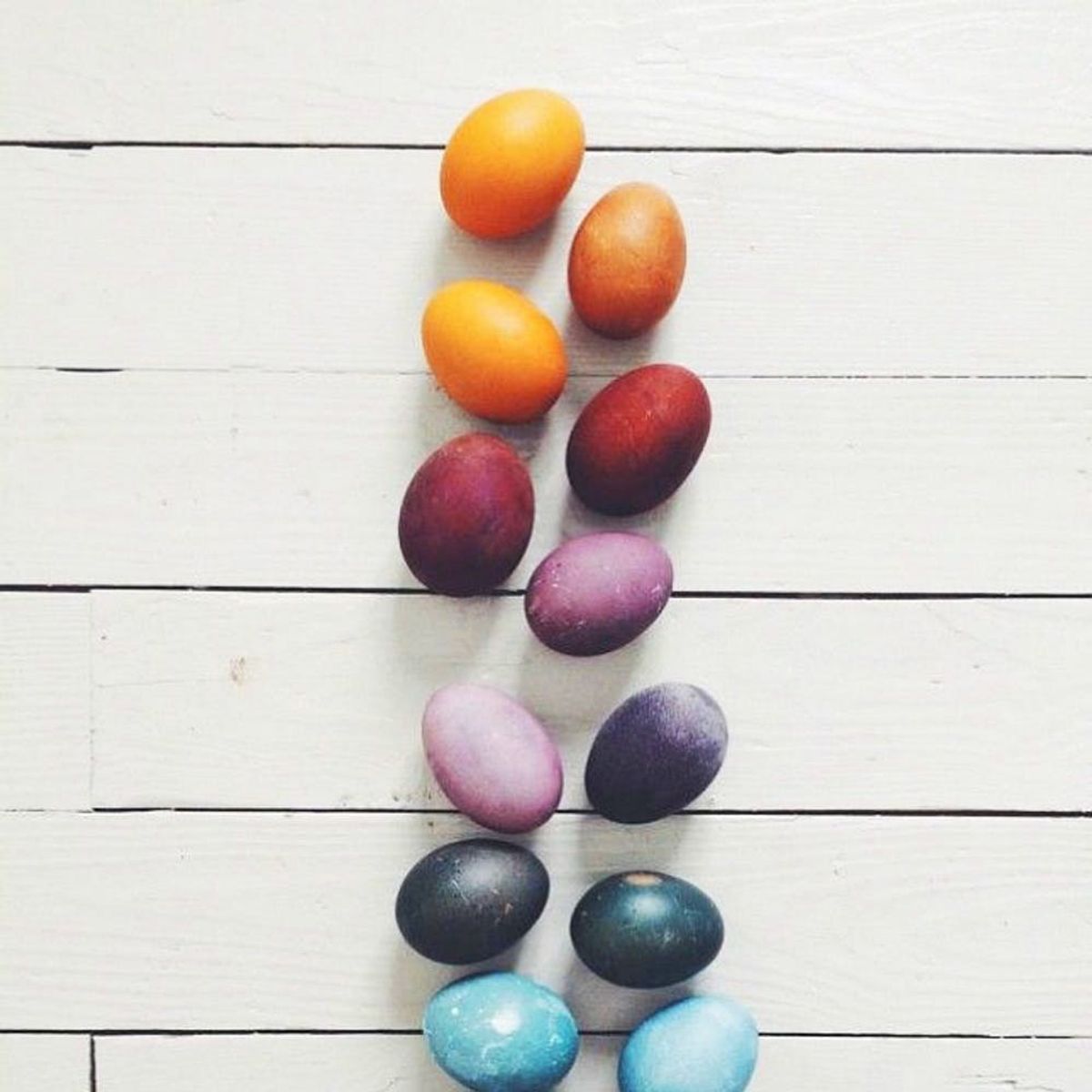Go ahead. Make the Easter bunny jealous.
11 Ways to Naturally Dye Easter Eggs

We have fond memories of dunking white ovals into glasses of dark liquid and then being completely mystified when they came up a beautiful color. Here at Brit + Co, we haven’t quite gotten over the whole Easter egg craze. Maybe it’s our obsession with color or our love for all things holiday. Whatever the case, we thought it would be great to find some ways to dye our eggs naturally this year. With secret ingredients like cabbage and onions, these natural dyes will blow your egg-lovin’ mind. Check out these 11 tips for coloring eggs that’ll make you feel better about eating them later.
1. Veggie Dye Trifecta: Pastel hues, pressed flowers and feathers make these the perfect spring-inspired Easter eggs. All you’ll need are some leftover veggies — cabbage, carrots and beets — to create these beauts. (via Brit + Co)
2. Coffee Dye: Don’t throw out that leftover bit of your morning coffee. Use it to make these pretty brown Easter eggs. (via PopSugar)
3. Cabbage: Yup. These gorgeous turquoise blue eggs were also dyed with purple cabbage. You have to try it to believe it. (via Macted)
4. Use Vinegar: Among all the tips and tricks, it’s a fact that using vinegar instead of water in your natural dyes turns out a better color. (via Dreamy Whites)
5. Grape Juice: Want some lovely lavender Easter eggs in your bunch? Use grape juice as your dye. (via Kirsten Rickert)
6. Onion Dye: Who would’ve thought that onion skins could turn out such a pretty burnt orange dye? We also love the idea of making herb prints on your eggs. (via Hugo and Mathilda)
7. Classic Three: Beets, blackberries and turmeric: the three most common natural dyes. And with those beautiful colors, we can see why. (via Nourish and Inspire Me)
8. Jewel Colors: If these natural dye solutions don’t have your eggs looking like Daenerys’ dragon eggs, we don’t know what will. (via Green Thumb White Apron)
9. Tea Dye: How would you like some chamomile flavored egg salad? Dyeing your eggs with tea will give them a hint of extra flavor. (via Teavana)
10. Mixing It: The best part about natural dyes is that you can experiment with mixing all kinds of colors with ingredients you already have laying around. Win. (via Make Haus)
11. Wooden Eggs: If edible Easter eggs aren’t really your thing, try using some natural dyes on wooden ones so you can be in on the magic too. (via The Merrythought)
Have you used any natural dyes for your Easter eggs? How did they turn out? Tell us below!



















